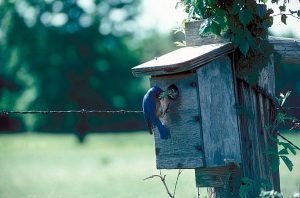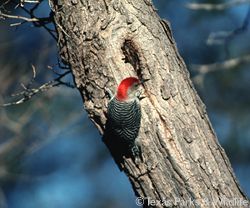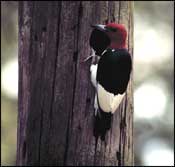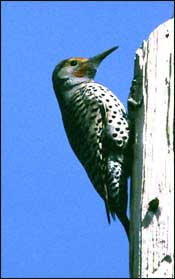The Eastern Bluebird of Happiness
Friday, September 28th, 2018This is Passport to Texas
Henry David Thoreau once wrote that “the bluebird is the bird with the sky on his back.”
While they carry the blue sky on their backs, their chests and under their chin are reddish orange, while their bellies are a beautiful soft white.
The Eastern Bluebird is among three species of bluebirds found in Texas. During the past few decades, the Eastern bluebird’s populations have been declining in some areas, due in part to an alteration of habitat. Habitat alteration isn’t the only threat to the bluebird of happiness: the prevalence of European Starlings and house sparrows also play a part in its decline.
The non-native starling and sparrow were introduced to North America in the 19th Century. Like the Eastern bluebird, they are both cavity nesters. Unlike the bluebird, they are bullies. They’ll takeover a cavity already inhabited by a bluebird (or other cavity nesters)… and take no prisoners.
Something you can do is to build a bluebird nest box and put it up in your yard. You will need to monitor it, though, to ensure that neither a European Starling nor house sparrow take up residence.
Find a link to plans for making your own bluebird nest box at passporttotexas.org.
For Texas Parks and Wildlife…I’m Cecilia Nasti.









 Passport to Texas is a
Passport to Texas is a  Passport to Texas is made available by:
Passport to Texas is made available by: